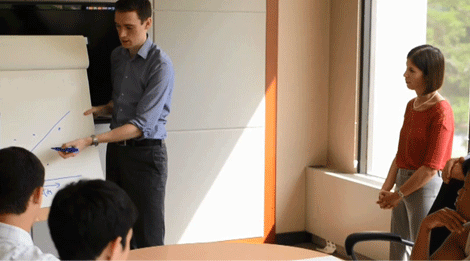It is vital you keep your product portfolio fresh. Many companies ensure at least 30% of their products have been developed within the last five years. That said, new product launches are tricky.
Increase your chance of success
As many as nine out of ten new product launches fail, mainly due to lack of a ‘stage gate process,’ which ensures the product is likely to succeed before it is launched.
With product development research, you can increase your chances of success exponentially – whether your product is physical or conceptual.
Our solution
Ideas are never in short supply but they must be screened to eliminate those with no chance of success. B2B International’s ideation sessions are perfect for this.
We help you turn your ideas into concepts – concepts that can be put in front of potential customers and tested. The closer the description of the concept to the final product, the better the result, so we encourage you to use schematics, photographs and words to describe the new offers. Qualitative research and quantitative research can be used too.
When using prototypes, we ensure they are tested in realistic conditions, and the product launch itself is also an opportunity to track success and to make corrections should this be required.
To read our white paper on product development market research, follow the link below:
New product development research has a high ROI
While ideas with no future should be killed before they waste time and money, we assess all those new products with potential, understanding that new products can often start small and then eventually grow into a huge market.
Indeed, new product research has high ROI and can significantly increase your chance of success.
What is involved?
As market researchers, we are not involved in every stage of new product development – rather we act as moderators during ideation. We test concepts by allowing the target audience to touch and feel the new product, and we use focus groups at this early stage to discuss the product in depth.
Quantification is used to determine the likely penetration and take-up of the new product. Online research can be helpful too because it is so easy to show pictures and diagrams of products in different forms. Product trials are critically important, and we ensure the companies chosen are committed to the process and have signed a nondisclosure agreement so that intelligence doesn’t leak out to the competition.
Ensuring products are used and tested in the right way is vital and completing the test within the agreed time slot needs all the skills of an excellent research company – this is a period during which the agency has released control of the study to the participating companies.

[Webinar] How To Develop Successful New Products
The following webinar was recorded during our Go Beyond Webinar Series in June 2015. The webinar discusses 10 tips on how to identify new product opportunities – from breakthroughs to product enhancements and additions.
Key topics covered include techniques to uncover revolutionary ideas, and establishing success criteria for making go/no go decisions.
Case study: Product development research
Business challenge
One of our clients makes safety products used by workers on production lines. In order to carry out the product trial we engaged with the health and safety managers and production managers (the gatekeepers) who specify what type of safety products are used in their factories. The companies that took part in the survey received an incentive, much of which was passed through to the workforce.
What we did
Precise instructions were written and passed to the workforce so they knew how to test the product and, after a proscribed period of time, they filled in a self-completion questionnaire to share their views on how it performed. A small number of participating companies (20 to 30) can generate 200 or 300 workers who test the product. It is important to spread the product around different companies to find out how views differ.


